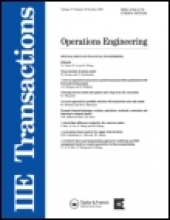Allocating Protection Resources to Facilities When the Effect of Protection is Uncertain
 Article Status: Published
Article Status: PublishedPublication Year: 2016
Hugh R. Medal, Edward A. Pohl, Manuel D. Rossetti. IIE Transactions 48(3), 220–234.
[PDF] [External Link]
We study a new facility protection problem in which one must allocate scarce protection resources to a set of facilities given that allocating resources to a facility only has a probabilistic effect on the facility’s post-disruption capacity. This study seeks to test three common assumptions made in the literature on modeling infrastructure systems subject to disruptions: 1) perfect protection, e.g., protecting an element makes it fail-proof, 2) binary protection, i.e., an element is either fully protected or unprotected, and 3) binary state, i.e., disrupted elements are fully operational or non-operational. We model this facility protection problem as a two-stage stochastic program with endogenous uncertainty. Because this stochastic program is non-convex we present a greedy algorithm and show that it has a worst-case performance of 0.63. However, empirical results indicate that the average performance is much better. In addition, experimental results indicate that the mean-value version of this model, in which parameters are set to their mean values, performs close to optimal. Results also indicate that the perfect and binary protection assumptions together significantly affect the performance of a model. On the other hand, the binary state assumption was found to have a smaller effect.

